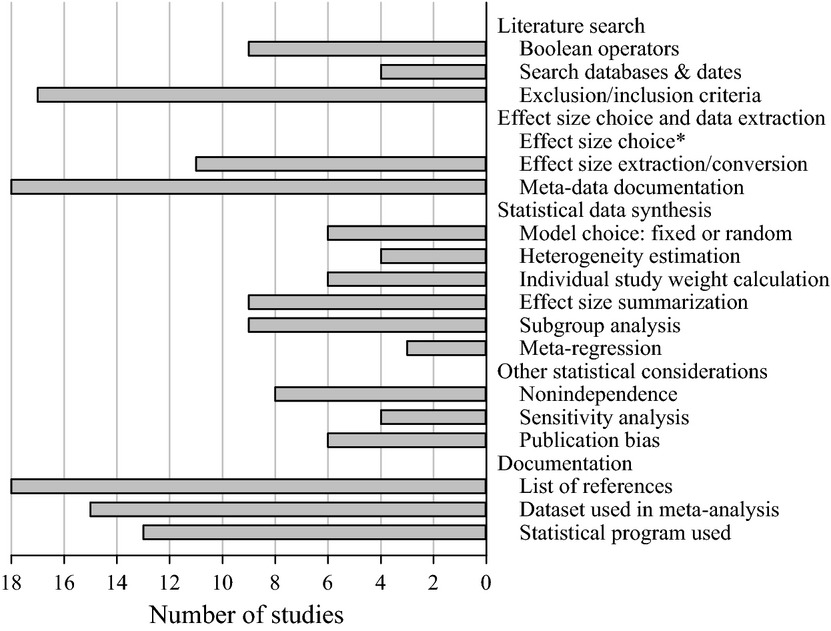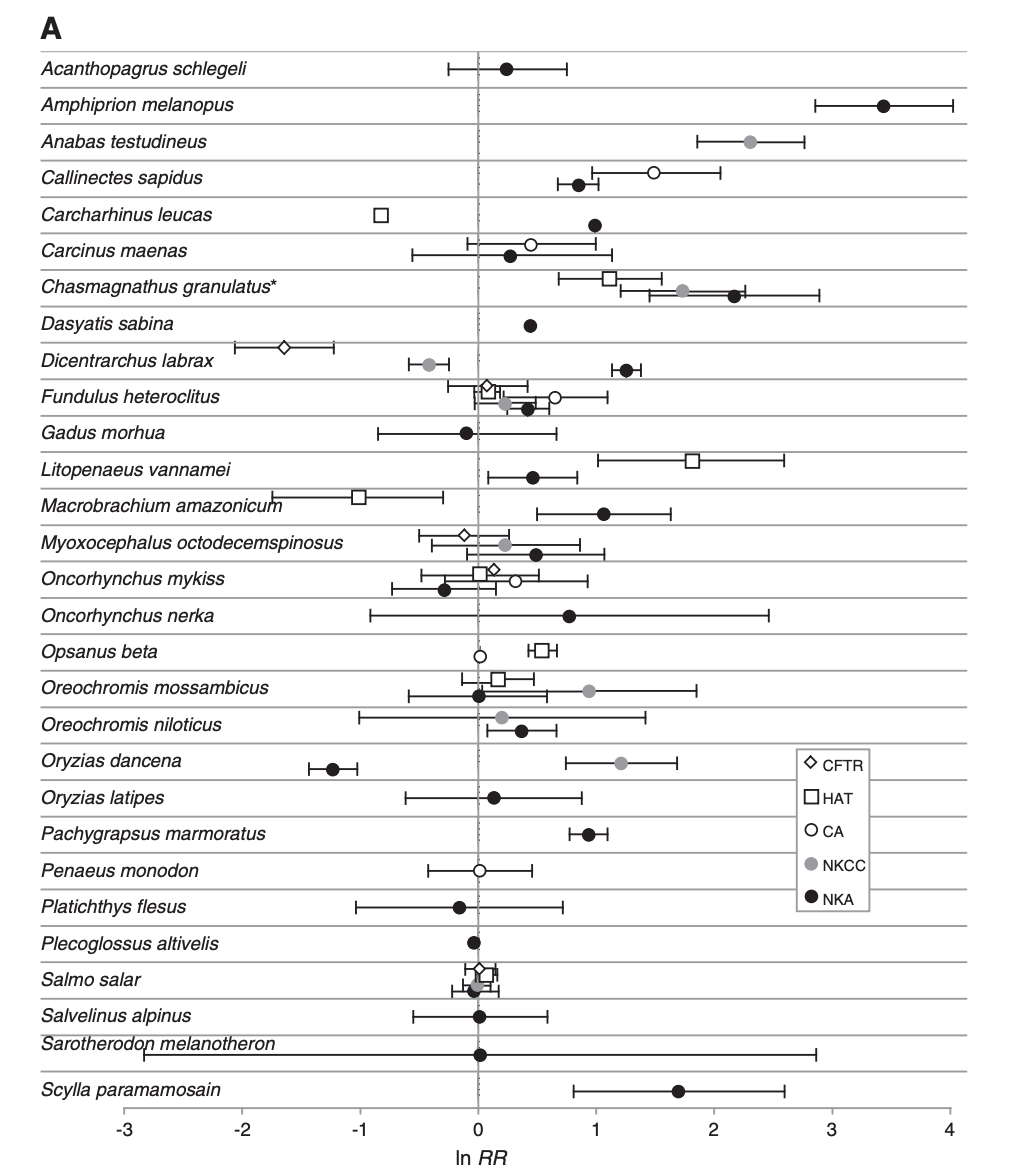Keyword: data synthesis

ArchMiller, A. A., E. F. Bauer, R. E. Koch, B. K. Wijayawardena, A. Anil, J. J. Kottwitz, A. S. Munsterman, and A. E. Wilson. 2015. Formalizing the definition of meta-analysis in Molecular Ecology. Molecular Ecology 24:4042-4051.
Abstract
Meta-analysis, the statistical synthesis of pertinent literature to develop evidence-based conclusions, is relatively new to the field of molecular ecology, with the first meta-analysis published in the journal Molecular Ecology in 2003 (Slate & Phua 2003). The goal of this article is to formalize the definition of meta-analysis for the authors, editors, reviewers and readers of Molecular Ecology by completing a review of the meta-analyses previously published in this journal. We also provide a brief overview of the many components required for meta-analysis with a more specific discussion of the issues related to the field of molecular ecology, including the use and statistical considerations of Wright’s FST and its related analogues as effect sizes in meta-analysis. We performed a literature review to identify articles published as ‘meta-analyses’ in Molecular Ecology, which were then evaluated by at least two reviewers. We specifically targeted Molecular Ecology publications because as a flagship journal in this field, meta-analyses published in Molecular Ecology have the potential to set the standard for meta-analyses in other journals. We found that while many of these reviewed articles were strong meta-analyses, others failed to follow standard meta-analytical techniques. One of these unsatisfactory meta-analyses was in fact a secondary analysis. Other studies attempted meta-analyses but lacked the fundamental statistics that are considered necessary for an effective and powerful meta-analysis. By drawing attention to the inconsistency of studies labelled as meta-analyses, we emphasize the importance of understanding the components of traditional meta-analyses to fully embrace the strengths of quantitative data synthesis in the field of molecular ecology.

Havird, J. C., R. P. Henry, and A. E. Wilson. 2013. Altered expression of Na+/K+-ATPase and other osmoregulatory genes in the gills of euryhaline animals in response to salinity transfer: a meta-analysis of 59 quantitative PCR studies over 10 years. Comparative Biochemistry and Physiology, Part D: 8(2):131-140.
Abstract
Recent advances in molecular techniques have allowed gene expression in euryhaline animals to be quantified during salinity transfers. As these investigations transition from studying single genes to utilizing genomics-based methodologies, it is an appropriate time to summarize single gene studies. Therefore, a meta-analysis was performed on 59 published studies that used quantitative polymerase chain reaction (qPCR) to examine expression of osmoregulatory genes (the Na+/K+–ATPase, NKA; the Na+/K+/2Cl− cotransporter, NKCC; carbonic anhydrase, CA; the cystic fibrosis transmembrane regulator, CFTR; and the H+–ATPase, HAT) in response to salinity transfer. Based on 887 calculated effect sizes, NKA, NKCC, CA, and HAT are up-regulated after salinity transfer, while surprisingly, CFTR is unchanged. Meta-analysis also identified influential factors contributing to these changes. For example, expression was highest: 1) during transfers from higher to lower salinities comprising a physiological transition from osmoconformity to osmoregulation, 2) 1–3 days following transfer, 3) during dissimilar transfers, and 4) in crustaceans rather than teleosts. Methodological characteristics (e.g., types of controls) were not important. Experiments lacking in the current literature were also identified. Meta-analyses are powerful tools for quantitatively synthesizing a large body of literature, and this report serves as a template for their application in other areas of comparative physiology